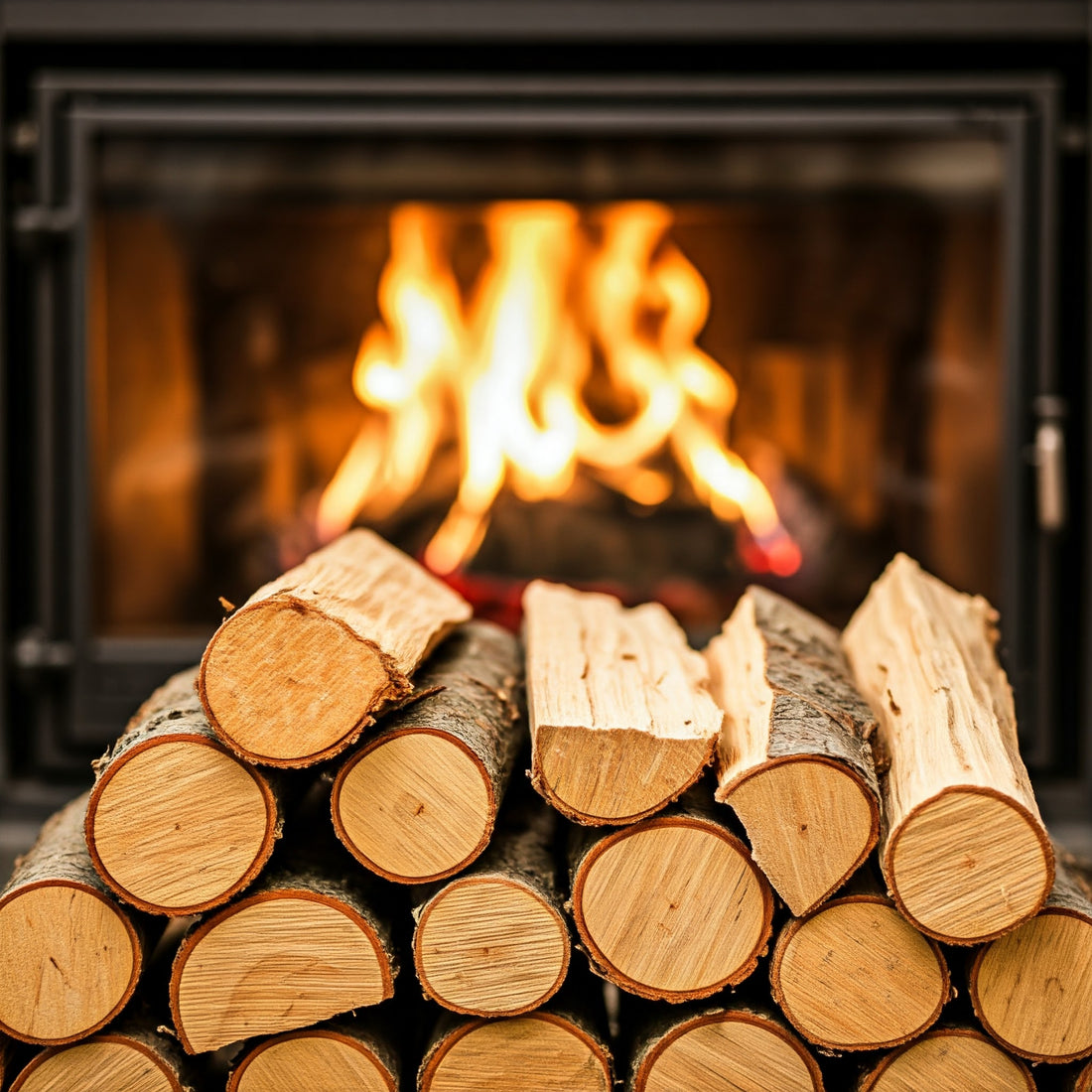
Does Burning Certain Woods Reduce the Need for Cleaning?
Share
As a homeowner who enjoys a cozy fire in the fireplace or wood stove, you may wonder if burning certain types of wood could reduce the frequency of chimney cleaning. The truth is, not all wood is created equal when it comes to burning efficiency and the impact on your chimney. In this blog post, we’ll explore the relationship between different types of wood and chimney cleaning needs, helping you make informed choices to maintain a safer and more efficient fireplace.
Understanding the Importance of Chimney Cleaning
Before diving into the specifics of how burning different woods affects chimney cleaning, it's important to understand why regular chimney maintenance is essential.
- Creosote Build-Up: When wood burns, it releases smoke and gases, which can condense inside the chimney. This process leads to the formation of creosote, a highly flammable substance that can accumulate over time. If left unchecked, creosote build-up is a major fire hazard.
- Soot and Debris: Aside from creosote, soot and other debris can also gather in the chimney, affecting the airflow and causing blockages. Proper chimney cleaning ensures that these byproducts don’t interfere with the performance of your fireplace or pose any danger to your home.
- Safety: Chimney cleaning is vital to ensure that your fireplace operates safely. A clean chimney allows for better ventilation, preventing harmful gases like carbon monoxide from entering your living space.
With that in mind, let’s take a closer look at how the type of wood you burn can affect the frequency and extent of chimney cleaning.
Softwood vs. Hardwood: What’s the Difference?
The type of wood you burn plays a significant role in how much cleaning your chimney will require. The two main categories of firewood are softwood and hardwood, each with distinct burning characteristics.
Softwood:
- Examples: Pine, fir, spruce, cedar, and cypress.
- Characteristics: Softwoods tend to burn faster and hotter than hardwoods but produce more smoke and soot. This can lead to a quicker accumulation of creosote in the chimney.
- Cleaning Consideration: Due to the higher levels of smoke and creosote, burning softwood can result in the need for more frequent chimney cleaning. Additionally, some softwoods (like pine) have higher resin content, which can cause more sticky creosote to form, further increasing the risk of build-up.
Hardwood:
- Examples: Oak, maple, ash, birch, and hickory.
- Characteristics: Hardwoods burn slower and produce more consistent heat. They tend to generate less smoke and burn cleaner, making them a better option for reducing creosote build-up in your chimney.
- Cleaning Consideration: Since hardwoods produce less smoke and creosote, they generally result in fewer chimney cleanings. However, it’s still essential to have your chimney inspected regularly to ensure optimal performance and safety.
The Role of Moisture Content in Chimney Cleaning
The moisture content of the wood you burn is also a crucial factor in determining how much cleaning your chimney will need. Wet or green wood has a higher moisture content, which means it produces more smoke and less heat. This can increase the amount of creosote that accumulates in your chimney.
- Well-Seasoned Wood: Wood that has been properly seasoned (dried for six months or longer) burns more efficiently, with less smoke and creosote. Using well-seasoned hardwood is the best choice for reducing the frequency of chimney cleaning and ensuring a cleaner burn.
- Unseasoned or Wet Wood: Burning wet or green wood results in more smoke and creosote, which leads to a faster buildup in your chimney. It also decreases the efficiency of the fire, requiring more wood and more frequent chimney maintenance.
Tips for Reducing the Need for Chimney Cleaning
While the type of wood you burn is an important factor, there are several other ways to reduce the need for frequent chimney cleanings:
- Use Hardwoods: As mentioned, hardwoods like oak, ash, and hickory burn cleaner than softwoods, producing less smoke and creosote.
- Burn Well-Seasoned Wood: Always burn dry, seasoned wood with a moisture content of less than 20%. This reduces smoke and creosote build-up, contributing to a cleaner chimney.
- Avoid Burning Pine and Other Sap-Rich Woods: While pine and cedar may burn quickly and give off a pleasant smell, they produce more creosote due to their high resin content. Consider limiting the use of these woods or burn them in smaller quantities.
- Ensure Proper Ventilation: A chimney that is properly vented ensures that smoke and gases are efficiently expelled. Make sure your chimney has a good draft, and avoid using it when the air is damp or too still.
- Schedule Regular Inspections and Cleanings: Even with the right wood, it’s important to have your chimney professionally cleaned and inspected at least once a year. This helps prevent dangerous creosote build-up and ensures the fireplace is in good working order.
Conclusion: Does Burning Certain Woods Really Reduce Chimney Cleaning Needs?
In short, yes, burning the right kind of wood can reduce the need for frequent chimney cleaning. Hardwoods like oak, hickory, and ash produce less smoke and creosote, which translates to fewer cleanings and a safer, more efficient fireplace. On the other hand, softwoods and wet wood contribute to faster creosote build-up and may require more frequent chimney maintenance.
However, regardless of the type of wood you burn, regular chimney inspections and cleaning are essential to ensure your fireplace remains safe and efficient. Proper care and maintenance not only reduce the risk of chimney fires but also improve the overall performance of your fireplace, providing you with warmth and comfort throughout the winter months.
